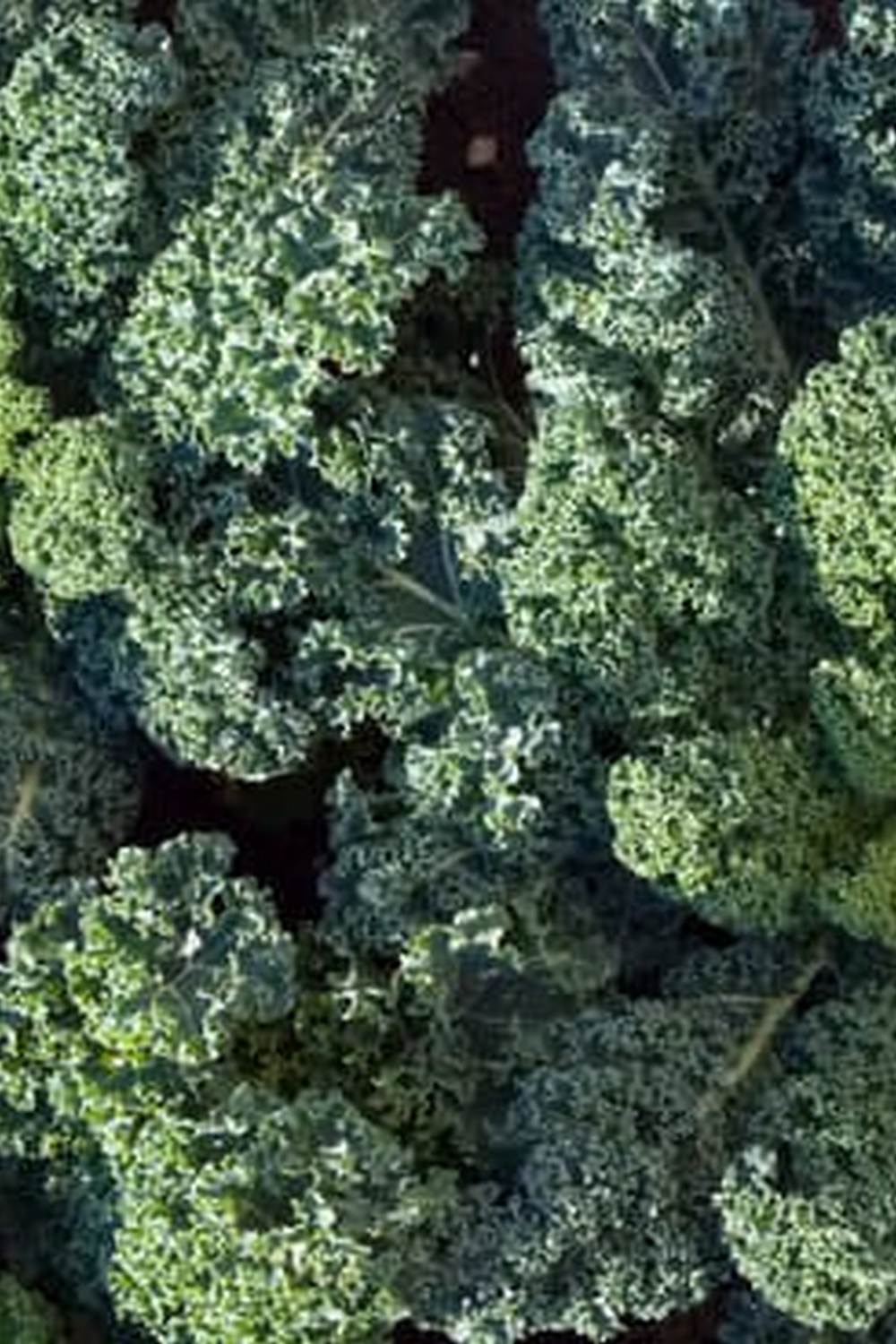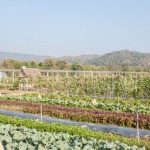Vegetable gardening in coastal northern California presents unique challenges and opportunities for gardeners. The region’s distinct climate, influenced by coastal breezes and cool temperatures, requires a specific approach to successful gardening. Despite these challenges, vegetable gardening in this area is incredibly important, both for individual sustainability and local food production.
Coastal Northern California offers a diverse range of vegetables that thrive in its climate, making it an ideal location for cultivating a variety of produce. Understanding the growing season is crucial to maximizing the potential of your vegetable garden in this region. From selecting the best varieties to preparing and maintaining soil, there are several key factors to consider when embarking on a successful vegetable gardening journey on the coast.
In this article, we will explore the unique climate and gardening challenges of Coastal Northern California as well as provide insights into the best vegetables to grow in the region. Additionally, we will offer tips for understanding the growing season and provide guidance on soil preparation and maintenance. Whether you are a novice gardener or have years of experience, this comprehensive guide aims to equip you with the knowledge and resources needed for thriving vegetable gardening in Coastal Northern California.
Best Vegetables to Grow in Coastal Northern California
When it comes to vegetable gardening in coastal Northern California, selecting the right vegetables is essential for a successful harvest. The unique climate of the region, with its cool, foggy summers and mild, wet winters, presents both challenges and opportunities for gardeners. Fortunately, there are several vegetables that thrive in this coastal environment and can be grown with relative ease.
One of the best vegetables to grow in coastal Northern California is kale. This leafy green thrives in the region’s cool, moist climate and can be grown year-round. Additionally, lettuce varieties such as butterhead and romaine are well-suited to the coastal weather and can be planted in succession for a continuous supply of fresh greens. Root vegetables like carrots and beets also perform well in the region’s sandy, well-draining soil.
For those who enjoy tomatoes, certain varieties such as Early Girl and San Francisco Fog are specifically bred to withstand the cool, foggy conditions of coastal Northern California. Other suitable vegetables for the region include broccoli, cauliflower, Brussels sprouts, and peas. When selecting vegetable varieties for your coastal garden, be sure to consider factors such as resistance to diseases common in the area and days to maturity to ensure a successful harvest.
In addition to these staple crops, herbs like cilantro, parsley, chives, and thyme thrive in the coastal environment and can add flavor and variety to your garden. By choosing vegetables that are well-suited to the unique climate of coastal Northern California, you can set yourself up for a rewarding gardening experience with bountiful harvests throughout the year.
Understanding the Growing Season
Coastal Northern California presents a unique climate for vegetable gardening. The region is characterized by mild temperatures, cool ocean breezes, and varying levels of fog, which all play a significant role in determining the growing season for different vegetables. Understanding the specific growing seasons in this area is crucial for successful vegetable gardening.
In Coastal Northern California, the coastal climate allows for an extended growing season compared to inland areas. The cool summer temperatures and limited frost make it possible to cultivate a wide variety of vegetables throughout the year.
However, certain vegetables thrive best during specific times of the year. For example, cool-season crops such as lettuce, kale, and broccoli do well in the spring and fall when temperatures are milder, while warm-season crops like tomatoes, peppers, and squash excel during the warmer summer months.
To maximize the growing season for different vegetables in Coastal Northern California, gardeners should take advantage of microclimates within their gardens. Understanding how temperature and sun exposure vary across different areas of the garden can help optimize planting times and locations for specific vegetables. Additionally, utilizing protective structures such as row covers or cold frames can extend the growing season even further by providing insulation against cooler temperatures.
When planning a vegetable garden in Coastal Northern California, it’s important to be mindful of how the unique climate influences plant growth and development. By carefully selecting appropriate planting times and utilizing strategies to extend the growing season, gardeners can make the most of the favorable conditions offered by this coastal region.
| Coastal Northern California | Growing Season Tips |
|---|---|
| Mild temperatures allow for an extended growing season | Utilize protective structures to optimize planting times |
| Varying levels of fog impact plant growth | Take advantage of microclimates within gardens |
| Cool ocean breezes influence temperature variations | Select appropriate planting times based on seasonal conditions |
Soil Preparation and Maintenance
Preparing the Soil
When it comes to vegetable gardening in coastal Northern California, proper soil preparation is essential for successful yields. The region’s unique climate can present challenges, but with the right approach to soil preparation, gardeners can set themselves up for success. Start by testing the soil to determine its pH level and composition.
Coastal soils tend to be acidic, so adding lime can help balance the pH level. Additionally, incorporating organic matter such as compost or well-rotted manure can improve aeration and drainage, which are crucial for healthy plant growth.
Maintaining Soil Health
Once the soil has been properly prepared, maintenance becomes key to sustaining its health over time. Mulching is an effective way to suppress weeds, retain moisture, and regulate soil temperature in coastal Northern California. This is particularly important during the dry summer months when water conservation is a priority.
Regular monitoring of the soil’s nutrient levels is also crucial. Coastal soils often lack essential nutrients like nitrogen and potassium, so supplementing with organic fertilizers or amendments tailored to the specific deficiencies of the soil is recommended.
Recommended Soil Amendments
In addition to organic matter, certain soil amendments can further enhance the quality of coastal Northern California soils for vegetable gardening. Using seaweed-based products can provide plants with valuable trace minerals while also helping to improve overall soil structure and fertility.
Diatomaceous earth is another beneficial amendment that aids in controlling pests such as slugs and snails while contributing micronutrients to the soil. By implementing these recommended practices for preparing and maintaining soil health in coastal Northern California, vegetable gardeners can optimize their growing conditions and achieve bountiful harvests despite the region’s unique climate challenges.
Pests and Diseases to Watch Out For
Common Pest and Disease Issues in Coastal Northern California
Coastal Northern California presents unique challenges when it comes to dealing with pests and diseases that can affect your vegetable garden. Common pests in the region include aphids, snails, and slugs, while diseases such as powdery mildew and tomato blight can also pose significant threats to your crops. The cool and damp climate of the coast can create favorable conditions for these issues, making it essential for gardeners to be vigilant in their pest and disease management practices.
Organic Solutions for Pest and Disease Management
Given the environmental consciousness of many coastal communities, organic solutions are often preferred for managing pests and diseases in vegetable gardens. Natural predators like ladybugs or praying mantises can help control aphid populations, while barriers such as copper tape or diatomaceous earth can deter slugs and snails. Additionally, organic fungicides made from ingredients like neem oil or copper soap can be effective in preventing common diseases without the use of harsh chemicals.
Preventative Measures and Vigilance
In addition to employing organic solutions, preventative measures are crucial for managing pest and disease issues in coastal Northern California. Regularly inspecting plants for signs of infestation or disease, practicing crop rotation, and maintaining good garden hygiene can all help minimize the risk of encountering serious problems.
By staying proactive and informed about potential threats to your vegetable garden, you can better protect your crops and ensure a successful harvest despite the challenges posed by pests and diseases in this unique coastal environment.
Climate Considerations
Coastal Northern California presents unique challenges for vegetable gardening due to its specific climate. The coastal climate is characterized by cool, foggy summers and mild, wet winters, making it different from inland regions. Despite these challenges, vegetable gardening in Coastal Northern California is highly important as it provides an opportunity to grow fresh, organic produce and contribute to local food sustainability.
When considering the climate in Coastal Northern California, certain vegetables thrive in this environment more than others. It’s important to select vegetables that can tolerate cool temperatures and moderate amounts of moisture. Some of the best vegetables to grow in this region include:
- Kale
- Chard
- Broccoli
- Brussels sprouts
- Carrots
To successfully adapt vegetable gardening practices to the coastal climate, it’s essential to take into consideration the prevalent fog, wind patterns, and occasional salt exposure from ocean mists. Vegetable gardeners in this region can mitigate these challenges by providing windbreaks for their garden beds and selecting varieties that are more tolerant of salt exposure.
Additionally, when planting a vegetable garden in Coastal Northern California, it’s important to be mindful of microclimates within your own garden space. Certain areas may receive more sunlight or be more sheltered from winds and fog than others. Understanding these microclimates will help you maximize the growing potential for your vegetables.
Overall, taking climate considerations into account is essential for successful vegetable gardening in Coastal Northern California. By understanding the specific challenges and adapting practices accordingly, gardeners can enjoy a productive and thriving vegetable garden despite the unique coastal climate.
Watering and Irrigation
When it comes to vegetable gardening in coastal Northern California, one of the most critical factors for success is proper watering and irrigation. The unique climate of this region, with its cool, foggy summers and mild, wet winters, requires special attention to ensure that your vegetable garden thrives.
In coastal Northern California, the best practices for watering vegetables include using water-efficient irrigation methods such as drip irrigation or soaker hoses. These methods help deliver water directly to the base of the plants, minimizing evaporation and ensuring that the roots receive adequate moisture. Additionally, implementing a rainwater harvesting system can be an excellent way to collect and store water during the rainy season for use in the drier months.
It’s important to note that while the coastal climate in this region provides consistent moisture from fog and occasional rainfall, it’s still essential to monitor soil moisture levels regularly. Maintaining a healthy balance of moisture is crucial for vegetable plants to thrive.
Over-watering can lead to root rot and other issues, so it’s essential to find the right balance for each type of vegetable you’re growing. By staying vigilant about watering needs and utilizing efficient irrigation methods, you can ensure that your vegetable garden in coastal Northern California remains healthy and productive.
| Vegetable | Optimal Watering Method |
|---|---|
| Lettuce | Drip Irrigation |
| Tomatoes | Soaker Hoses |
| Zucchini | Rainwater Harvesting System |
Community Resources and Support
When it comes to vegetable gardening in coastal Northern California, it can be incredibly beneficial to connect with local gardening communities and support networks. These resources can provide valuable information, tips, and even plant exchanges or seed swaps. Here are some community resources and support options to consider:
- Local Gardening Clubs: Joining a local gardening club can be a great way to connect with other vegetable gardeners in the area. These clubs often host regular meetings, workshops, and events focused on sharing knowledge and resources for successful vegetable gardening in the coastal climate.
- Farmers’ Markets: Visiting farmers’ markets in your area can provide an opportunity to connect with local growers who have experience with vegetable gardening in coastal Northern California. You can ask them about their favorite varieties, growing techniques, and even get personalized advice for your own garden.
- Online Forums and Social Media Groups: In today’s digital age, there are countless online forums and social media groups dedicated to gardening. Joining these communities can allow you to interact with other gardeners in the region, ask questions, share experiences, and learn from each other’s successes and challenges.
In addition to these community resources, it’s worth exploring any local extension services or master gardener programs that may offer workshops or consultations specific to vegetable gardening in coastal Northern California. By tapping into these resources and support networks, you can gain valuable insights and advice to elevate your own vegetable gardening efforts in the unique climate of the region.
Conclusion
In conclusion, vegetable gardening in Coastal Northern California presents its own set of challenges and rewards. The unique climate, with its specific growing seasons and coastal weather patterns, requires a thoughtful approach to selecting the best vegetables, preparing and maintaining the soil, managing pests and diseases, and optimizing water usage.
Despite these challenges, the importance of vegetable gardening in this region cannot be understated. Not only does it provide an opportunity to grow fresh, nutritious produce, but it also fosters a sense of community and connection with other gardeners in the area.
As detailed in this article, there are many vegetables that thrive in the coastal climate of Northern California. By understanding the growing season and adapting gardening practices to the local climate considerations, gardeners can take full advantage of their environment. Additionally, utilizing organic solutions for pest and disease management and implementing water-efficient irrigation methods will contribute to successful vegetable gardening in Coastal Northern California.
For those embarking on their vegetable gardening journey in Coastal Northern California or looking to refine their existing practices, it’s important to seek out community resources and support networks. Local gardening communities can offer valuable insights and tips based on their experiences with vegetable gardening in this region. By connecting with other gardeners in the area, individuals can find inspiration and encouragement as they navigate the unique challenges and joys of vegetable gardening in Coastal Northern California.
Frequently Asked Questions
What Vegetables Grow Best in Northern California?
The vegetables that grow best in Northern California include leafy greens like lettuce, kale, and spinach. Root vegetables such as carrots and radishes also thrive in the cooler coastal climate. Additionally, cool-season crops like broccoli, cauliflower, and peas do well in this region.
Can You Grow Vegetables Next to the Ocean?
Yes, you can grow vegetables next to the ocean, but you need to consider the salty air and sandy soil. Opt for salt-tolerant plants such as Swiss chard, beets, and certain varieties of tomatoes. It’s also important to provide windbreaks and regular watering to combat the ocean’s effects.
Can You Grow Vegetables Year Round in California?
In California, especially in the southern and coastal regions, it is possible to grow vegetables year-round due to the milder winter temperatures. With careful planning and selection of appropriate varieties, you can enjoy a continuous harvest throughout all four seasons. Using techniques like succession planting and protective coverings can extend the growing season even further.

If you’re looking to get into vegetable gardening, or are just looking for some tips on how to make your current garden better, then you’ve come to the right place! My name is Ethel and I have been gardening for years. In this blog, I’m going to share with you some of my best tips on how to create a successful vegetable garden.





